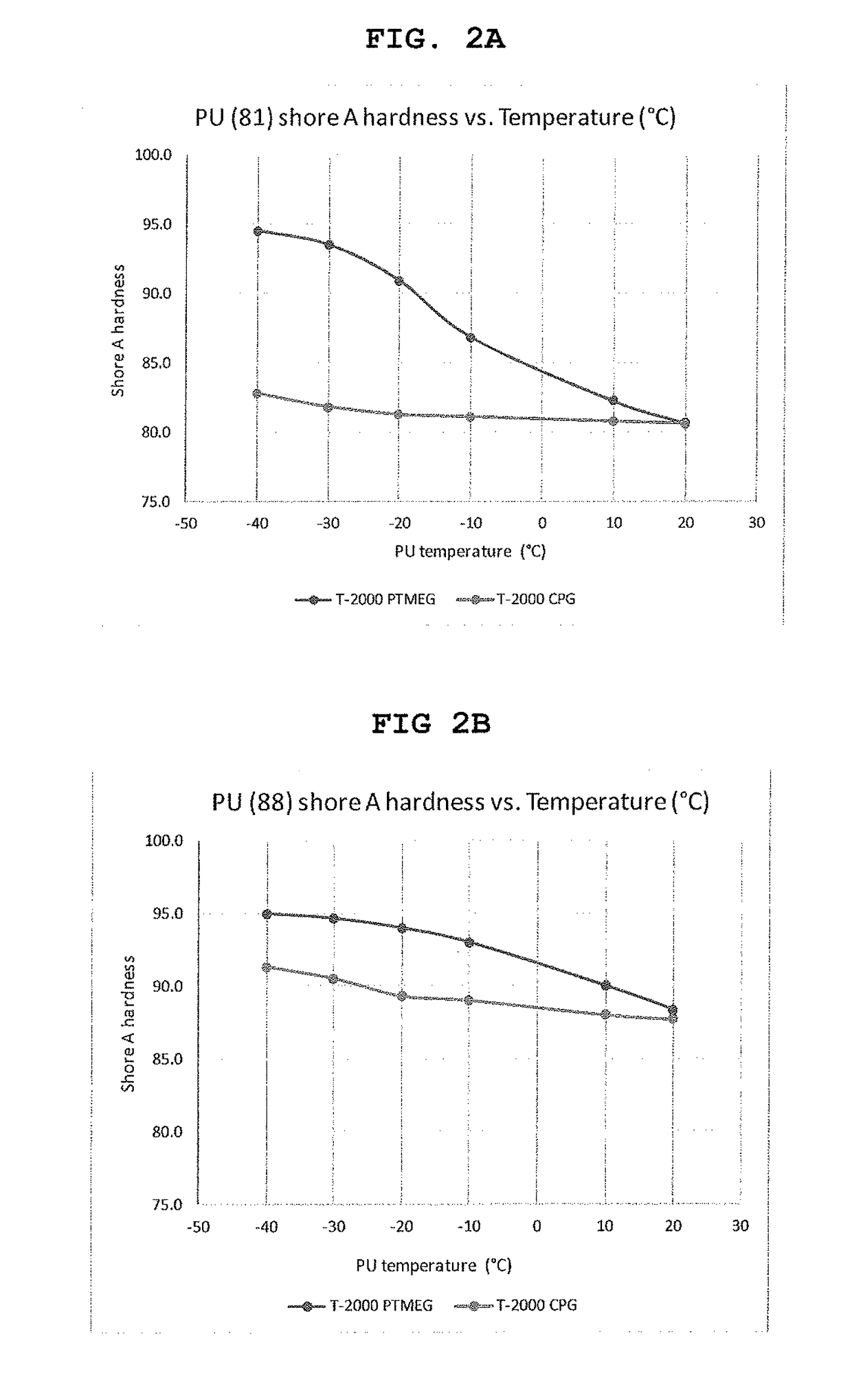Polyurethane fiber including copolymer polyol
a polyurethane and polymer technology, applied in the field of segmented polyurethane, can solve the problems of inconvenient handling and material transfer, and achieve the effects of improving dynamic properties,/or resistance to fatigue, and enhancing low temperature performan
- Summary
- Abstract
- Description
- Claims
- Application Information
AI Technical Summary
Benefits of technology
Problems solved by technology
Method used
Image
Examples
example 1a
[0048]The polymer solution with mixed additives from Example 1 was spun into a 40 denier spandex yarn with 4 filaments twisted together at a wind-up speed of 869 meters per minute. The as-spun yarn properties of this test item were measured and listed in Table 1.
example 1b
[0049]The polymer solution with mixed additives from Example 1 was spun into a 70 denier spandex yarn with 5 filaments twisted together at a wind-up speed of 674 meters per minute. The as-spun yarn properties of this test item were measured and listed in Table 1.
example 2
[0050]PTG L-1400 glycol (copolymer of 3Me-THF and THF including 14 mole % 3Me-THF and number average molecular weight 1400) of 300.00 parts by weight was mixed and reacted with Isonate® 125MDR MDI of 87.16 parts, with the capping ratio (NCO / OH) at 1.658, to form an isocyanate-terminated prepolymer with a percent of isocyanate groups (—NCO) at 3.00% of the prepolymer. This prepolymer was then dissolved in N,N-dimethylacetamide (DMAc) of 571.06 parts. This diluted prepolymer solution was allowed to mix and react with 271.77 parts of a mixture of diamine extender in DMAc solution (containing 7.35 parts of EDA, 1.58 parts of Dytek® A, and 262.84 parts of DMAc) and 8.90 parts of DEA in DMAc solution (containing 0.78 parts of DEA and 8.12 parts of DMAc) to form a homogenous polyurethaneurea solution with a polymer solids about 32.0% and a viscosity of 5000 poises measured at 40° C. This polymer solution was mixed with a slurry of additives including 4.0% bleach resistant agent, 0.17% delu...
PUM
| Property | Measurement | Unit |
|---|---|---|
| number average molecular weight | aaaaa | aaaaa |
| melting temperature | aaaaa | aaaaa |
| melting temperatures | aaaaa | aaaaa |
Abstract
Description
Claims
Application Information
 Login to View More
Login to View More - R&D
- Intellectual Property
- Life Sciences
- Materials
- Tech Scout
- Unparalleled Data Quality
- Higher Quality Content
- 60% Fewer Hallucinations
Browse by: Latest US Patents, China's latest patents, Technical Efficacy Thesaurus, Application Domain, Technology Topic, Popular Technical Reports.
© 2025 PatSnap. All rights reserved.Legal|Privacy policy|Modern Slavery Act Transparency Statement|Sitemap|About US| Contact US: help@patsnap.com



